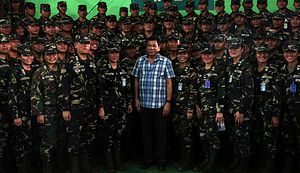Last week, the Philippine Navy conducted a demonstration of the country’s first surface-to-surface missile capability. While the event was expected, it nonetheless spotlighted ongoing efforts by the Southeast Asian state to continue to develop capabilities in this realm.
As I have noted previously in these pages, one of the key developments within Philippine military modernization under President Rodrigo Duterte had been the finalization of procurement of Spike extended range missile systems from Israeli weapons weapon manufacturer Rafael Advanced Defense Systems, to be installed on the PN’s multiple-purpose attack craft (MPACs) (See: “What’s Next for Philippine Military Modernization Under Duterte?”).
The missile system, which arrived in late April 2018, represented a milestone for the PN as it was officially equipped with its first-ever anti-surface missile capabilities. It has since been gradually incorporated into the MPACs, with technical inspections and other preliminary steps and then the first successful sea acceptance test of the Spike missile systems off of Bataan on August 9.
Following the August test, Philippine defense officials said that there would be more of such tests scheduled in the months to follow, including potentially featuring Duterte himself. In November, it was confirmed that the first publicized test since the August one would take place on November 21.
On November 21, the test took place as anticipated, with three MPACs, all fitted with the Spike-ER missile system, along with an AgustaWestland AW-109 attack helicopter, participating in the exercise off Lamao Point, Limay, Bataan, which had been dubbed a scenario-based capability demonstration and life-firing. During the exercise, three missile-equipped MPACs engaged three surface targets first with remote-controlled .50-caliber machinegun fire and then followed by two missile rounds, sinking them in the maneuvers, while the helicopter, armed with 2.75-inch high-explosive rockets, also fired its weapons.
During a press conference on board the BRP Davao Del Sur, Philippine Defense Secretary Delfin Lorenzana told reporters that the exercise was “impressive” given its success amid rough seas. He also added that the message to the Philippine people was that the PN, having lagged behind its neighbors, was improving to have the capability to control its maritime territory.
As Lorenzana himself has publicly admitted previously, the PN has a long way to go to catch up with some of the other regional peers, and part of that will be contingent not just on what the Duterte administration does over the next few years, but what successive administrations will do thereafter as well as part of a decades-long modernization process. Nonetheless, the acquisition of capabilities such as these and their continued integration represent steps in the right direction in this respect.

































